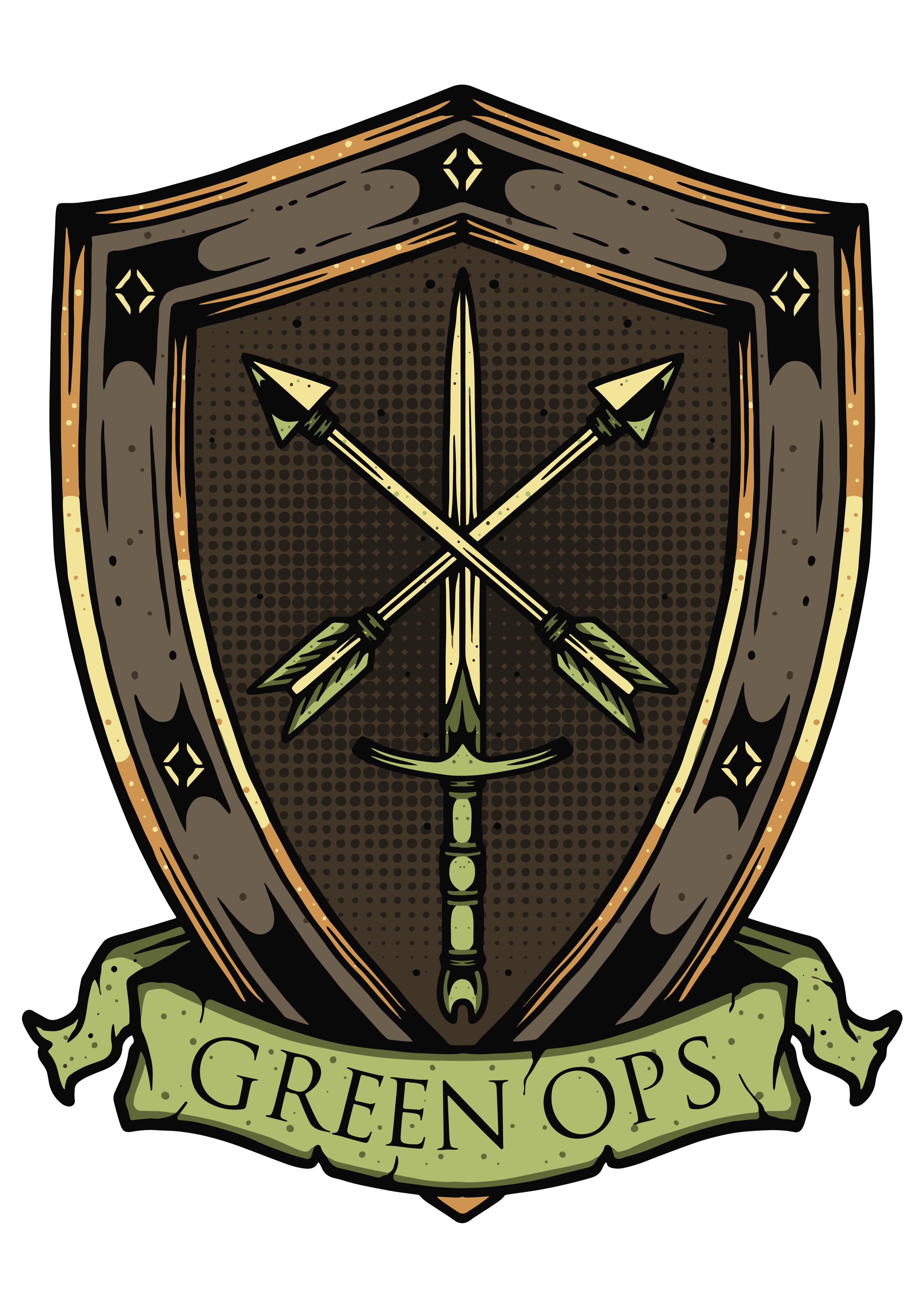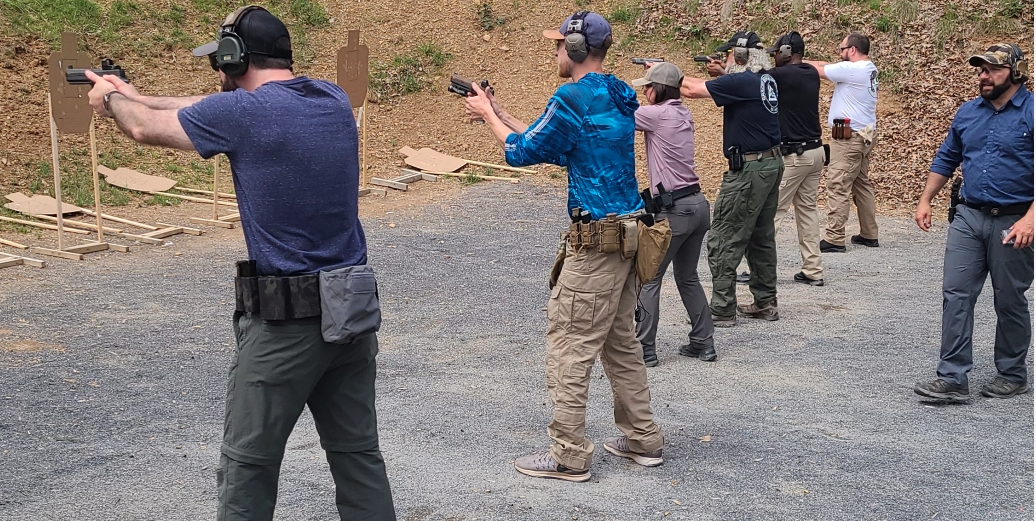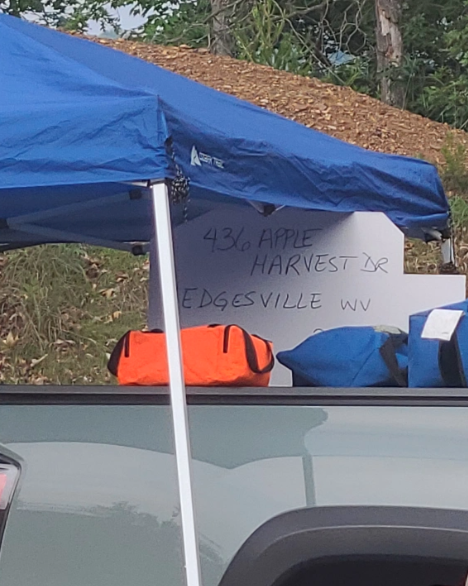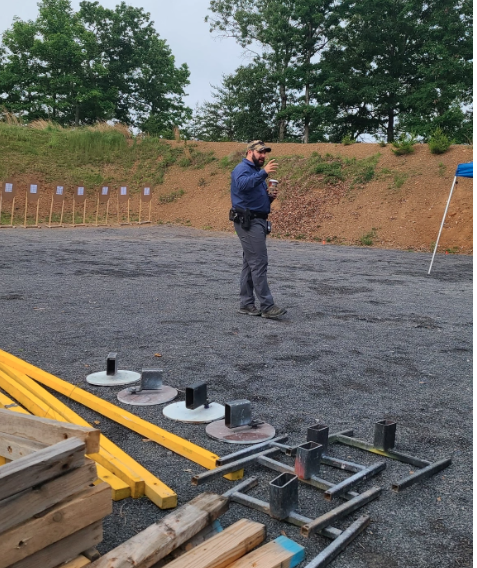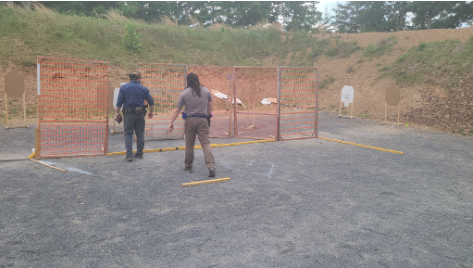Advanced Competition Pistol Class AAR at Thehebrewhammer.net
AAR Originally posted at Thehebrewhammer.net
It’s been about six months since I’ve taken a class. This was not entirely intentional (a TOC class got cancelled in the interim), but is in line with my goal of being more selective with how I use my time vis a vis classes vs competition.
When I saw the post from Green Ops on Facebook that they would be hosting an advanced competition class, I jumped on it. I literally signed up minutes after seeing the post. I know I have deficiencies with movement and stage planning, and a class that could help me fix those things would be absolutely worth it.
Disclaimers of Sources of Bias: I received a slight discount ($39) as a returning student and AAR writer. I am also one of the admins on their Facebook alumni group, which is more of a job than a perk, but I suppose has some influence on my perspective.
Class Title: Advanced Competition Pistol Class (USPSA/IDPA)
Class Description: From the website: “This course is designed to increase handgun skills for self-defense or competitive shooting. The target audience of the course is the experienced competition or tactical shooter who is looking to improve their speed, marksmanship and gun handling skills, and to take a deeper dive into best practices of the shooting sports in order to be more competitive and take your shooting sports performance to the next level. The main focus will be on discovering your limits with handgun shooting and handling skills, while practicing the skills and drills necessary to crush those USPSA and IDPA stages. We will cover shooting on the move, stage planning and footwork, while paying attention to efficiency, speed and accuracy and how it translates to USPSA and IDPA scoring. Students will learn self-diagnostics to continue development of their own personal performance, how to practice and track one’s own skill level.”
This class is the second in a two class series. The more introductory class was held the day before.
Cost: $260 (but I received a discount of $39, for a total cost of $221)
Round Count: Listed round count was 500. I would estimate it was a bit under 300 for me. It is possible they meant that the two day class series was closer to 500, which would make sense.
Instructors: Jo’shua Shaw and Julian Akistan. Josh is a USPSA GM and all-around great guy. Julian is an A-class USPSA shooter and also a good guy. They are both excellent instructors who could easily demo what they taught and show how stages should be shot at a high level. Bios on the Green Ops website.
Location/Date: Shadow Hawk Defense on June 12, from 9AM to 5PM. Shadow Hawk is a great big range with a lot going on. Facilities nearby were limited to porta-potties, but if you needed a real bathroom, I think you could have driven up to the main office. There was a USPSA match going on concurrently with the class, so the competitive atmosphere was there (along with some good-natured heckling).
Weather: 75f-80f and partially cloudy. Humidity was on the high side, so people were sweating and finding shade.
Equipment Details: I brought my Sig P320 X5 Legions (one with DPP, one with R1P), a DAA Alpha-X holster, and some Ghost pouches riding on a Blade-Tech double belt. Ammo was hot-ish 124gr reloads. I was pushing really hard this class, and did have a couple gear failures.
First, my primary X5 Legion with the Deltapoint Pro was off zero by 2″ to the right, which I quickly discovered during the initial dot torture drills (it wasn’t a great morning for me, but even I knew I wasn’t that bad). A little bit of adjustment got me back in good enough territory for the drills, but later, the battery on the DPP seemed to fail or at least not produce enough voltage for a dot visible in daylight. I swapped out to my backup X5 Legion with Romeo1 Pro and finished the course with that.
Second, my pouches were having some retention issues with my mags. I lost a few during movement drills, especially when I had to switch directions rapidly. I had been planning to switch to Alpha-Xi magazine pouches anyways, so I may relegate the Ghost pouches to sports with less frenetic movement (outlaw steel and 3gun). There were apparently some plugs I could use to increase magazine tension, but I have to admit I wasn’t blown away by the results when I played with them after class at home.
On one hand, equipment failures suck. On the other hand, I’d prefer to learn about them in class rather than at a match.
Preparation Drills: I’ve been shooting a bunch of steel lately, but not enough dry-fire especially from the holster.
Author’s Previous Experience: Civilian with no military or LEO background. Have shot some competition, but no accomplishments worth bragging about. Training junkie since April 2018, and have averaged a class a month since then. I am OK with a carbine, pretty good with a pistol, and just average with a shotgun.
Class Demographics: There were 13 students in the class, nearly all of them guys. Guns were at least half Sig P320s, and I think all of the rest were also striker-fired semis of some sort. It was 90% Carry Optics guns with a couple guys running irons – and the latter definitely struggled at times. I’m not sure if this is because they were newer shooters or because irons are harder, or if it was a bit of both. With a couple exceptions, the class as a whole was composed of excellent shooters – some easily better than me – and that competence really made it easy to keep moving through the day.
TD1 (morning): We had about 45 minutes of talking time starting at 9AM before we could go hammers-down (strikers-forward?) and start shooting, due to range rules.
Class kicked off with a medical and safety brief. Both subjects were treated with the respect they deserve, which I appreciated. Shadow Hawk is not quite in the middle of nowhere, but it’s also not all that close to a major urban area… being on the ball with the emergency medical stuff is critical. One “innovation” I thought was smart was writing down the address of the range in big letters on a target… that way, no confusion about the address.
After the briefs, the class reviewed what they learned the day before. I wasn’t there for that, but it certainly sounded like a jam-packed curriculum that was a hard day’s work. The expectation was set that today would be much like that day – breaks between drills to hydrate and reload mags, with a short lunch break, but that everyone would be expected to keep pushing – exactly what I wanted! He was also quite specific that everything we would do would be while moving, which certainly held true.
The instructors and students introduced themselves. I’d say about half the students were experienced competitors, and the other half were looking to get into it.
Josh spent a good amount of time talking about the Green Ops five pillars of excellence. Always worth repeating, these are:
Dry-fire
Live-fire
Competition
Timer
Video
There was a lot of emphasis on dry-fire, and using a structured approach like Steve Anderson’s book. I’ve personally seen this work (for myself and others), but one thing I found particularly great about this class was that it did a much better job than most of explaining why certain skills were so important and what needed to be emphasized. Moving reloads was a real light bulb moment, for example – Josh specifically talked about how nailing those during your first step was critical to setting you up for success coming into your next shooting position. If you don’t, you’re either fumbling on the run (slow) or completing it as you’re entering that next position (which isn’t quite as bad, but still not optimal). If you’re going to be motivated to dry-fire, understanding why you are practicing seemingly-niche things and the context of why they are important is a big deal, perhaps a bigger deal than I realized.
Another thing that was really emphasized in our pre-shooting discussions was “sooner-not-faster”. This plays into the whole maximizing efficiency thing. You want to be doing the next thing as soon as possible after you’re done with the last thing. So if it’s time to move after shooting a target, don’t waste time, move explosively with a purpose as soon as you’re done pulling that trigger (with appropriate follow-through). Start aiming through a non-visual barrier if that’s a possibility. The thin line between “soon” and “too-soon” was explored in class, often with awkward results, but it was certainly quite educational.
Finally, we talked about the mental game. You need to tune things out and believe in yourself. Trust the process. Don’t focus on results. I appreciated this. There were times in class where I was not enamored with my results compared to others, but felt pretty good about the way I accomplished my task.
The shooting kicked off with dot torture. It was here that I discovered the red dot on my pistol was about 2″ off to the right at five yards, which the mathematically inclined amongst you realize is a way way off. I suspect this was from a fall during dry-fire or coming out of my safe, as I have seen that DPP suffer similar zero shift from hitting cement during a different class, but who knows. I did a quick adjust of my zero to get it centered enough (I think elevation may also have been compromised), but eventually ditched it later in class for my backup gun (which, thankfully, had a great zero and shot exactly where I pointed it). This is on me for not confirming my guns before class, but it was not exactly a confidence builder. One downside to the bay setup is that there was no place to go off to the side to fix a zero, so I was pretty much stuck.
After dot torture, we did some box drills. A box drill is where you take a step (or two), while drawing and firing your gun. We did it dry and live. The idea is that you’re frequently going to be drawing while moving in USPSA (and even IDPA!), so this is a skill you need to practice and learn. Getting in the habit of having a lowered center of gravity also contributes to stability while shooting.
Following the box drills were some moving reload practice. The focus was on moving Burkett drills, where you just get the tip of the magazine into your gun.
The final drill before lunch was a moving modified El Prez in the style of the box drills. Basically, you moved forward or to the side, and engaged the three targets with a reload. Distance was about 10-20 yards, so you couldn’t necessarily just blaze away and get hits, either. One thing I found really clever about these drills was that the sideways movement area was much smaller than the forwards movement area, and the instructors constantly stressed that you don’t need to take big fast steps when you have a tiny moving area – if you want to do slower and exaggerated to maintain stability, that very well may be a much better play on ports and so on.
We broke for a short lunch break at this point.
TD1 (afternoon): Afternoon training kicked off with a more complex drill involving an open paper target, a paper target partially obscured by a no-shoot, and steel. I’m embarrassed to admit I didn’t take good notes on what we did on this one, but it definitely involved moving and not hitting that no-shoot. I managed to pull that off, albeit I had an inordinate issue hitting the steel (which tends to be my forte!). Probably jerking the trigger or pushing too hard on the transition.
One highlight of the class for me was the next set of drills, which I would broadly define as “shooting from awkward positions and keeping momentum”. Basically, there were three shoot boxes separated by 4-6 feet, and the objective was to shoot steel from each of them as quickly as possible. The trick was to start moving immediately from the buzzer, keep momentum, and start shooting as soon as you had one foot in the box and the other lifted.
What it devolved into was a series of hilarious crane-kick-style shooting poses as we all tried to master this. This was compounded by people having too much momentum and then not hitting the target, forcing them to scramble back into the box. Eventually, I stopped thinking so much about the form I was using and more about the point of the drill, and the “feel” of it all started coming together.
This is going to sound dumb to many readers, but I suck at movement. A lot. I didn’t do high school sports (unless learning Talmud is a sport, in which case I was awesome), and the few athletic endeavors I’ve had since didn’t involve much in the way of precision movement. This leads to such unfortunate educational gaps as “not knowing how to move sideways efficiently” or “having awareness of where you are ending up during movement without actually looking”. The instructors did a fantastic job of coaching me, and by the end, I was in at least somewhat better shape.
The final drill of the day was call it and leave it. This is a drill where you take a shot at a steel target, run to the next position, and repeat until you have 5 hits. The trick, of course, is that there are no make-ups. Besides being excellent cardio (especially once you rack up a miss or two), it taught us how to move quickly and flare off momentum as we came into the box. We did a few iterations of the drill, with both short movement and long movement.
Finally, we analyzed and shot a couple USPSA stages. One was an example stage for the class, and the other was a massive 31rd memory stage from the match happening concurrently with the class. The stage analysis discussion was really useful to me. There was a lot of emphasis on understanding where you could see targets, where you HAD to move, etc. I personally have problems locking in stage plans in my head, but at least I felt better about understanding the stages. The huge memory stage was initially intimidating, but ultimately wound up being a nice wrap-up of the things we practiced in class – constant movement, sooner-not-faster, and so on.
We also got a chance to practice drop-step launches from leans on the first stage. I have to admit I had never done one before, but when I put it into action, the results were pretty startling. I am definitely going to make it a part of any movement drills I do.
I had a good stage plan with poor execution for the first stage, and a mostly-good, well-executed stage plan for the second one. I didn’t come close to “winning either stage”, but I felt pretty good about my performance on the second stage – it was far better than I ever would have been able to pull off before class, and would have put me in the top half of the match overalls on it. Josh demonstrated “how it’s done” on both stages, and turned in some masterful performances.
Class Debrief: We tore down our stage, did some brass policing, and talked about what we thought of the class. Everyone was pretty wiped out at this point.
Conclusions: This was the first run of the class for Green Ops, and it turned out great. I learned so much about movement (a key weakness of mine), and definitely got context as to why certain skills were so important to practice. I pushed myself hard, and sometimes the wheels fell off a bit, but even when I failed, I felt like I was gaining insight into the important concepts I was trying to master.
The instructors deserve a ton of credit. They competently demonstrated what they were teaching every time, and it was clear they had complete mastery of the subject matter. But the fellow students deserve a bit of credit, too… the atmosphere was positive and encouraging, with really good shooters to push yourself even outside of a strictly competitive context.
I highly recommend the class. I’ve never taken a “GM class” before, and I guess I didn’t know what I was missing. I’ve already signed up for another (the Gorospe/Wampler collaboration), and will definitely be keeping my eyes open for more such opportunities in the future (like if Tim Herron would ever schedule a class not on a Jewish holiday, hint hint). While it is tempting to say “and now I want to up my classifier ranking in USPSA”, I am going to focus on the process and skills, and stop worrying about specific outcomes. This class proved to me that if you put in the work and learn what you need to learn, the outcomes will naturally follow.
